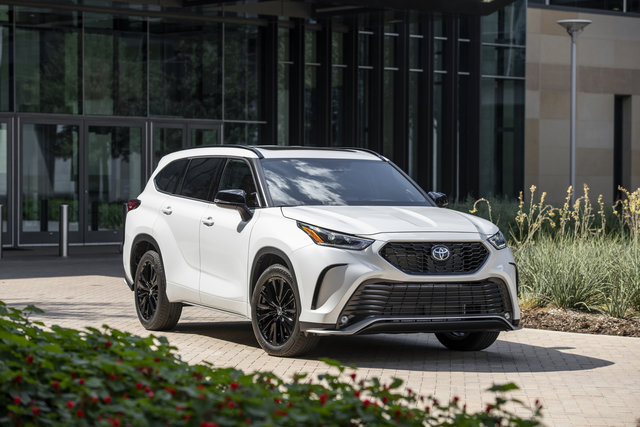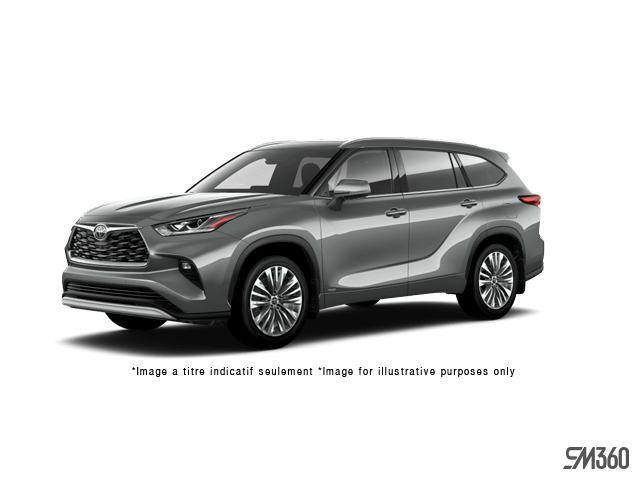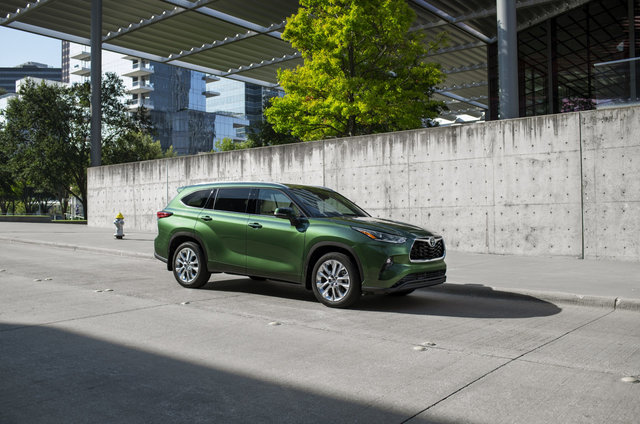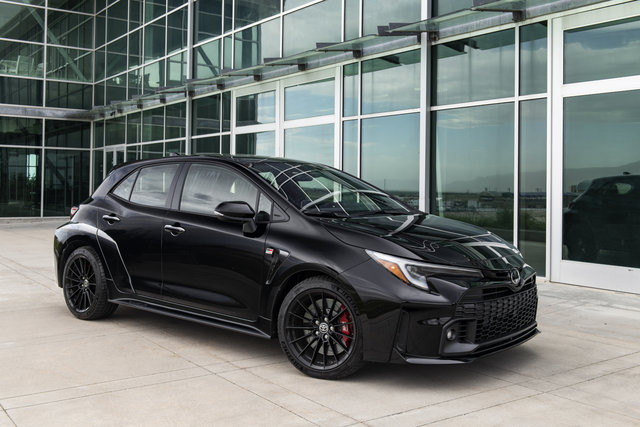Families in Belleville looking for a three-row SUV that handles daily routines and weekend trips...

Advanced driver assistance systems have moved from luxury-car exclusives to standard equipment on mainstream vehicles. The 2026 Toyota lineup includes Toyota Safety Sense 3.0 as standard across models, providing active safety technologies designed to support driver awareness and reduce collision risk. Two features in particular—Lane Tracing Assist and Left Turn Oncoming Vehicle Detection/Braking—address common driving scenarios that Ontario drivers encounter daily.
These systems use cameras and radar to monitor the road environment, providing warnings and, when necessary, automatic interventions to help prevent collisions. For drivers in Belleville navigating Highway 401 traffic, city intersections, and rural two-lane roads, these features add measurable safety value without requiring additional cost or complexity.
Lane Tracing Assist: Keeping Centred During Highway Driving
Lane Tracing Assist (LTA) works in conjunction with Dynamic Radar Cruise Control to help keep the vehicle centred in its lane. The system uses a forward-facing camera to detect lane markings, then provides gentle steering inputs to maintain position between the lines.
LTA activates when cruise control is engaged and lane markings are clearly visible. The system applies subtle steering corrections—drivers barely notice the inputs under normal conditions. If the vehicle begins drifting toward the lane edge, LTA provides slightly stronger steering assistance to guide it back toward centre.
The technology proves particularly useful during highway driving, where maintaining lane position over extended distances can lead to driver fatigue. LTA reduces the need for constant minor steering adjustments, allowing drivers to focus more attention on traffic flow, mirrors, and surrounding vehicles.
When LTA Works Best
LTA requires clearly painted lane markings to function properly. Well-maintained highways with visible lines provide ideal conditions. The system performs reliably during daylight hours and in good weather when camera visibility is optimal.
Reduced visibility conditions—heavy rain, snow, or fog—can limit LTA effectiveness if lane markings become difficult for the camera to detect. Construction zones with temporary or unclear markings may also reduce system confidence. When LTA cannot reliably detect lane markings, it deactivates automatically and alerts the driver.
The system does not replace attentive driving. It provides steering assistance, but drivers must keep hands on the wheel and remain ready to take full control at any time. LTA monitors for driver input and will issue warnings if it detects the driver isn't actively holding the steering wheel.
How LTA Differs from Lane Departure Alert
Toyota vehicles also include Lane Departure Alert with Steering Assist (LDA), which serves a related but distinct function. LDA activates at speeds above 50 km/h and provides alerts if the vehicle drifts out of its lane without a turn signal. If the driver doesn't respond, LDA can provide corrective steering to help guide the vehicle back into its lane.
LTA takes a more proactive approach by continuously helping keep the vehicle centred rather than waiting for lane departure to occur. The key difference: LDA reacts to unintended lane departure, while LTA actively maintains lane position as an ongoing function when cruise control is engaged.
Left Turn Oncoming Vehicle Detection/Braking: Intersection Safety
Left Turn Oncoming Vehicle Detection/Braking addresses a common collision scenario: turning left across oncoming traffic at intersections. The system uses cameras and radar to detect approaching vehicles in the opposite lane when the driver signals a left turn.
If the system determines that an oncoming vehicle's speed and distance create collision risk, it provides audible and visual warnings. If the driver continues into the turn despite the warning, the system can automatically apply brakes to help prevent or reduce the severity of impact.
The technology activates when the driver signals a left turn and begins to enter the intersection. The system monitors the opposing lane for approaching vehicles, calculating their speed and distance. When parameters indicate high collision risk, intervention occurs.
Real-World Intersection Scenarios
Intersections present complex decision-making challenges. Drivers must judge oncoming vehicle speed, distance, and timing while also monitoring cross traffic, pedestrians, and traffic signals. Misjudgments happen—particularly during busy traffic periods, at dusk when lighting creates visual challenges, or when drivers are distracted or fatigued.
Left Turn Oncoming Vehicle Detection/Braking provides an additional safety layer by continuously monitoring the opposite lane. The system doesn't rely on driver judgment alone; it uses sensor data to assess collision risk objectively.
Common scenarios where the system provides value include:
- Misjudging the speed of approaching vehicles
- Failing to notice a vehicle in the oncoming lane
- Distraction during the turn sequence
- Visibility limitations due to weather or lighting conditions
System Limitations
Left Turn Oncoming Vehicle Detection/Braking operates within specific parameters. The system requires clear visibility of oncoming traffic—obstructions such as large vehicles, road geometry, or visual interference can limit detection range.
The technology works best at intersections with good visibility in all directions. Complex intersections with multiple turning lanes, unusual geometry, or poor sightlines may reduce system effectiveness.
Drivers must understand that the system provides assistance, not guaranteed collision prevention. Attentive driving, proper intersection observation, and conservative turning decisions remain essential. The technology adds a safety net; it doesn't eliminate the need for careful driving.
Toyota Safety Sense 3.0: Complete System Overview

Lane Tracing Assist and Left Turn Oncoming Vehicle Detection/Braking are components within Toyota Safety Sense 3.0, which includes additional active safety technologies across all 2026 Toyota models.
Pre-Collision System with Pedestrian Detection
Pre-Collision System uses radar and cameras to detect vehicles, pedestrians, cyclists, and motorcyclists ahead. When collision risk is detected, the system provides audible and visual warnings. If the driver doesn't react, automatic emergency braking activates to help prevent or reduce impact severity.
The system operates during both day and night conditions, monitoring the road ahead continuously. Pedestrian detection proves particularly valuable in urban environments where foot traffic is common.
Full-Speed Range Dynamic Radar Cruise Control
Dynamic Radar Cruise Control (DRCC) maintains a set distance from vehicles ahead, adjusting speed automatically in traffic. The system works across the full speed range, from complete stops to highway speeds.
During highway congestion, DRCC reduces driver fatigue by handling speed adjustments automatically. The system can bring the vehicle to a complete stop in traffic, then resume when traffic moves again.
Road Sign Assist
Road Sign Assist uses the forward-facing camera to recognize speed limit signs, stop signs, and yield signs. Detected signs appear in the multi-information display, keeping drivers informed of current speed limits and upcoming traffic control devices.
The system provides visual reminders without audible alerts, allowing drivers to confirm current speed limits at a glance.
Automatic High Beams
Automatic High Beams detect headlights of oncoming vehicles and taillights of vehicles ahead. The system automatically toggles between high and low beams to maximize visibility without creating glare for other drivers.
During rural night driving, automatic high beam control improves forward visibility while reducing the need for manual beam adjustments.
Proactive Driving Assist
Proactive Driving Assist provides gentle braking or steering inputs to support driving tasks. The system can help maintain distance from vehicles ahead, provide gentle braking when approaching curves, and assist with steering near pedestrians or cyclists.
Proactive Driving Assist operates subtly—most drivers notice smoother, more comfortable vehicle behavior without being aware of individual system interventions.
How These Systems Work Together
Toyota Safety Sense 3.0 technologies operate as an integrated system. Data from cameras and radar sensors feeds multiple functions simultaneously, creating layered protection.
For example, during highway driving:
- Lane Tracing Assist helps maintain lane position
- Dynamic Radar Cruise Control manages following distance
- Pre-Collision System monitors for sudden stops ahead
- Automatic High Beams adjust lighting based on traffic
- Road Sign Assist displays current speed limits
Each system operates independently but shares sensor data, creating comprehensive monitoring of the driving environment.
Standard Equipment Across 2026 Toyota Models
Toyota includes Safety Sense 3.0 as standard equipment across its 2026 lineup—no premium packages required, no optional add-ons necessary. Every Corolla, Camry, RAV4, Highlander, and other Toyota model includes the full suite of active safety technologies.
This approach makes advanced driver assistance accessible to all buyers regardless of budget or trim selection. The entry-level trim includes the same safety systems as top-tier models.
Driver Responsibility and System Limitations
Toyota Safety Sense 3.0 technologies support safe driving; they don't replace attentive operation. Drivers must remain alert, keep hands on the wheel, and be ready to take full control at any time.
System limitations include:
- Reduced effectiveness in poor visibility conditions
- Reliance on clear sensor inputs
- Inability to detect all potential hazards
- Performance variations based on environmental factors
Understanding these limitations helps drivers use the systems appropriately—as assistance tools that enhance safety when combined with attentive, defensive driving practices.
Comparing Safety Systems Across Toyota Grades
All 2026 Toyota models include Safety Sense 3.0 as standard equipment. Grade-specific differences appear in additional driver assistance features available on higher trims, such as:
- Blind Spot Monitor with Rear Cross Traffic Alert
- Panoramic View Monitor
- Front and Rear Parking Assist with Automatic Braking
- Traffic Jam Assist
- Lane Change Assist
- Front Cross Traffic Alert
These supplementary systems add convenience and additional safety layers but aren't part of the base Safety Sense 3.0 package included on every vehicle.
Real-World Value for Ontario Drivers
Ontario driving conditions test safety systems across diverse scenarios. Highway 401 congestion benefits from Dynamic Radar Cruise Control and Lane Tracing Assist. Urban intersections utilize Left Turn Oncoming Vehicle Detection/Braking. Rural two-lane roads leverage Automatic High Beams and Pre-Collision System.
Winter conditions add complexity—snow-covered lane markings may limit Lane Tracing Assist, but Pre-Collision System and Dynamic Radar Cruise Control continue functioning to support safe following distances and collision avoidance.
The systems adapt to driving conditions automatically. When sensors detect reduced visibility or compromised functionality, affected features deactivate and alert the driver. This prevents false interventions while maintaining system integrity.
Experience Toyota Safety Sense 3.0 at Belleville Toyota
Toyota Safety Sense 3.0 provides active safety technologies designed to support driver awareness and reduce collision risk. Lane Tracing Assist and Left Turn Oncoming Vehicle Detection/Braking address specific driving scenarios that Ontario drivers encounter regularly, adding measurable safety value as standard equipment across the 2026 Toyota lineup.
Book your test drive today at our Belleville dealership to experience these systems during real-world driving. Our product specialists can demonstrate Lane Tracing Assist during highway driving, explain Left Turn Oncoming Vehicle Detection/Braking operation, and answer questions about how Safety Sense 3.0 enhances everyday driving confidence.
Other Articles That May Interest You
Sports car enthusiasts in Ontario have a rare opportunity to own something truly distinctive. The...
Performance enthusiasts in Belleville looking for rally-bred driving excitement have a compelling...





